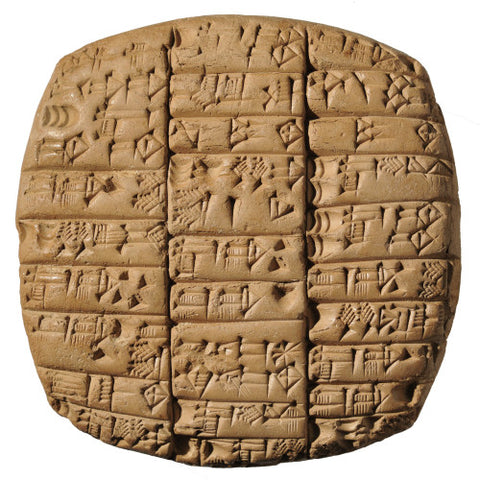Cuneiform Writing

Deciphering the Past: The Legacy of Cuneiform Writing
In the annals of human history, few inventions have been as revolutionary as writing. Among the earliest writing systems was cuneiform , a method that etched into the annals of history the stories, laws, and lives of ancient civilizations. This blog post looks at the origins, evolution and importance of cuneiform writing, which is a testament to human ingenuity and a cornerstone of our understanding of the ancient world.
What are the origins of cuneiform writing?
Cuneiform writing appeared at the end of the fourth millennium BCE, around 3400–3300 BCE, in the region of Sumer , located in modern-day Iraq. This region, which was part of the Fertile Crescent , was a melting pot of cultures and technological innovations. Cuneiform, meaning "wedge-shaped" in Latin, was first developed for accounting purposes. Early scribes used a reed stylus to make impressions on clay tablets, marking the beginning of recorded history.
How did Cuneiform evolve and spread?
The use of cuneiform expanded from simple digital records to Sumerian language texts, encompassing economic transactions, laws, myths, and epic tales. Over time, the script evolved to become more rational and versatile, accommodating the writing of several languages, including Akkadian , Babylonian , Assyrian, and Hittite . This adaptability speaks to its effectiveness and has led to its use throughout the Middle East, from Iran to Syria, and as far south as Egypt .
The art of writing
Cuneiform writing is a complex system that combines logograms (symbols representing words) and syllabograms (symbols representing syllables). This combination allowed scribes to express a wide range of concepts, from mundane commercial transactions to the most profound religious texts. The Epic of Gilgamesh , one of the oldest known works of literature, was written in cuneiform and provides invaluable information about the social, political, and religious life of the ancient Near East.
Decryption and inheritance
The art of reading cuneiform was lost at the end of the first millennium BCE, as writing fell into disuse in favor of alphabetic systems. Its decipherment in the 19th century, particularly through the work of scholars like Henry Rawlinson , opened a window into the ancient past. The recovery of cuneiform texts has revolutionized our understanding of ancient civilizations, providing details of their daily lives, governance, economic systems and religious beliefs.

Conclusion
The legacy of cuneiform goes well beyond its role as a writing system. It represents the dawn of history, the beginning of recorded human experience. Thanks to cuneiform, we understand the complexity of ancient societies, their innovations, their challenges and their achievements. It reminds us of our common heritage and man's timeless effort to communicate and record his existence. As we continue to decipher these ancient texts, we discover more about our collective past, ensuring that the voices of those long gone are not forgotten.
Cuneiform writing is not just a relic of the past; it is a bridge that connects us to the ancients, allowing us to learn from them and appreciate the foundations on which our modern world is built. As we explore these ancient texts, we are reminded of the enduring power of writing to preserve history and shape the future.
